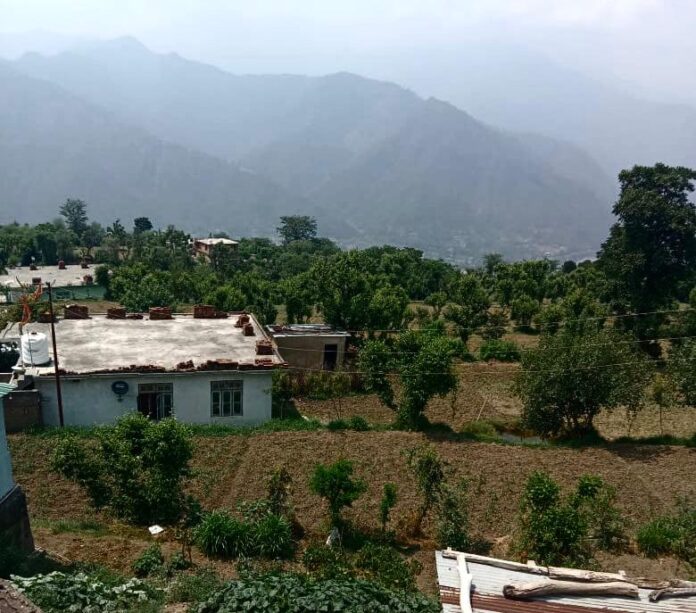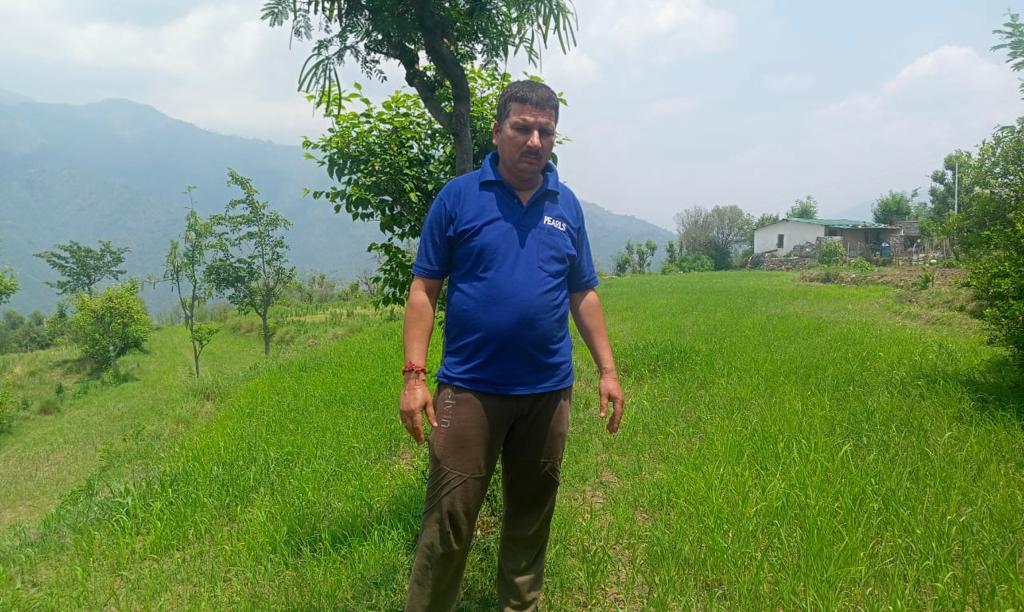
Gafira Qadir | Twocircles.net
“We thought it was our chance to become rich, so we celebrated the news but the happiness did not last for long,” says Karan Singh, 62, a resident of Salal village in Jammu’s Reasi district.
In February this year, the union government found 5.9 million metric tonnes of lithium reserves for the first time in the country in Jammu. Lithium which is a non-ferrous metal is one of the key components in EV batteries, among other industries.
The Discovery Triggers Worry in Salal
Karan and other villagers were initially happy when they received the news of lithium discovery in the area. However, upon learning about the consequences associated with it, their joy quickly faded away.
The realization of the potential negative outcomes dampened their spirits and left the villagers feeling concerned about what the future might hold.
Salal which is home to 10,000 people, is a village enveloped by snow-capped mountains, offering breathtaking natural beauty and a picturesque environment. Its rich natural beauty and environmentally friendly atmosphere make it a desirable destination for nature enthusiasts.
“Lithium mining can cause such an impact that we won’t just lose our land and homes but Salal will lose its identity and beauty,” Karan told Two Circles.
Lithium Mining Disastrous for Ecology: Experts
The mining of lithium, as per the experts, can lead to massive environmental destruction and the Salal that has been there for centuries will “no longer exist”.
As per various environmentalists, extraction of lithium, also known as ‘white gold’, is not just harmful to communities where the mining takes place but can lead to environmental destruction too. Lithium extraction has a track record of polluting the water and land as well as ecosystem destruction.
In regions such as Chile and Argentina, which are major lithium producers, there have been reported instances of water scarcity and land pollution associated with lithium mining operations.
Raja Muzaffar Bhat, a Kashmir-based environmental activist, said a lot of mining and excavations in the mountains “will prove disastrous for our ecology and environment”. “If the mining is done on a huge level [in Salal], it is highly possible that the Chenab (River) will not survive,” he said.
“A lot of muck and silt will go into Chenab River during the mining, and it will cause severe threat to this river,” he said.
What Does the Lithium Discovery Mean for India?
Despite the harmful impact of lithium mining, the demand for lithium is likely to rise 40 times by 2040, primarily driven by the global shift towards electric vehicles (EVs) and the growing need for energy storage systems.
In many countries, EV sales have increased, and India is no exception. As part of its initiatives to lessen pollution and reliance on fossil fuels, the Indian government has been actively encouraging the adoption of EVs.
India’s electric vehicle sales crossed the one million-unit mark in fiscal year 2023. According to a report by JMK Research, EV sales in March 2023 rose by 82 percent from the March 2022 figure.
The discovery of significant lithium reserves in Salal comes at a time when the country is seeking to electrify private vehicles and reduce dependence on fossil fuels. “Assuming global average reserve-resource ratio, the deposit could be more than sufficient to electrify the entire passenger vehicle and two-wheeler installed base in India,” according to Jefferies, an American investment bank.
However, the bank also added that developing and scaling up a lithium mine typically takes several years, and mining operations can have “adverse environmental impacts, including high water intensity and potential effects on local biodiversity”.
Mining, Not Good for Agriculture: Locals and Activists
Raja Muzaffar, the activist, said that the Jammu ecology is fragile. “I don’t think it (mining) will benefit the local villagers.”
Several villagers that Two Circles spoke with said that they are scared of losing their land and livelihood. Salal’s major income source has been agriculture but most of the agricultural land has been marked under the mining project.
Pritam said that the villagers are confused if they should be happy or concerned. “We hardly understand the consequences of the mining because the government hasn’t reached out to us for awareness,” he said.
Fear of Losing Land and Displacement Looms Over Villagers
Rajinder Singh, 50, is a farmer who owns 70 kanals (measurement of land) of agricultural land but fears losing it all to the mining project. “I’m afraid that I’ll lose my land and will be displaced,” he said.
The government acquired his land when a dam was built in the 1980s. “My family gave 17 kanals of land for the dam construction and we were not even compensated well,” he said.
He said that the government will cut trees and demolish residential houses to start mining. According to Rajinder, of the nearly 1000 houses in Salal, 329 are to be demolished. Two Circles couldn’t independently verify the number.
The Pritam Singh, the village head said that the mining will be allowed only once we are rehabilitated and compensated well. “There are residential houses, schools, and health centers on the land where the mining is to happen. We should be given all the required facilities,” he said. Rajinder and others agree.

“If [the lithium mining] comes at the cost of our lives, we won’t let the government move an inch this time,” Rajinder declared.
According to a senior official at the Geology and Mining Department Jammu and Kashmir, the lithium mining project is at an early stage. “We are still doing several exercises and there is still some study left. Once we are done with that, only then we will plan further,” he said. “In all such important projects, displacement is inevitable. But I can’t say much for now.”
Burdening an Already Fragile Ecosystem
The extensive infrastructural projects have already made Salal’s ecology worse with the lithium mining adding more misery.
The Indian government built the hydropower dam – which generates 690 MW of power most of which meets the energy needs of northern India – in the 1980s on the Chenab River in J-K’s Reasi district. A year after commissioning the project, the dam’s reservoir started silting up followed by the two severe floods in 1988 and 1992.
The Chenab River flows through both India and Pakistan and is one of the largest tributaries of the Indus River. Pakistan, India’s arch-rival, objected to the construction of the dam in the 1970s when the country initiated the project.
The lithium mining in Jammu and Kashmir is seen as yet another reason for the feud between the countries given the environmental concerns.
‘Mining Will Also Lead To Pollution’: Villagers
Back at Salal, Rajinder, and Karan, along with other villagers, believe that mining will nearly “destroy” their village. “Deforestation will happen again and it’s sad to see our home go through such an environmental disaster,” he said. “Mining will also lead to pollution.”
The villagers believe that it’s not just the area of mining that will be affected by the consequences, but the remaining part of Salal will be negatively impacted too. “It will not be easy for the remaining residents to live in the village either because of the pollution,” said Karan.
In his whole life, Karan has seen Salal pollution free and scenically rich. He worries due to the lithium mining, the future generation of Salal will never know how beautiful and rich their village was.
“This seems like the end of our village,” he said.
Gafira Qadir is an independent journalist. She tweets at: @GafiraQadir

